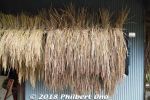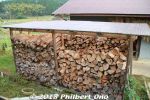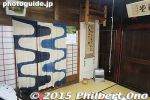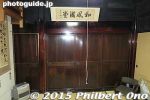 Image search results - "minshuku" Image search results - "minshuku" |

Onsen Minshuku Uohiko lodge near Hirakata Port. Ankou-nabe is a specialty. Recently renovated. 温泉民宿 魚彦
|
|
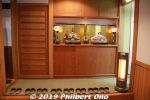
Minshuku Uohiko uses natural hot spring for the bath.
|
|
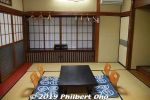
Standard size room in Minshuku Uohiko.
|
|
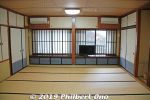
Large room in Minshuku Uohiko.
|
|
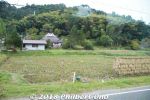
This is a farmhouse lodge (農家民宿) where we stayed in the city of Ayabe. It fronts rice paddies. The farmhouse lodge owner can pick you up at JR Ayabe Station.
|
|

Farmhouse lodge (農家民宿) named Pokapoka Noen. It has two main buildings.
|
|
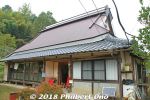
This is the main lodge where the kitchen, dining, and bath facilities are. It also has one guest room with twin beds. It is a traditional farmhouse with a thatched roof protected by a corrugated tin.Farm house in Ayabe, Kyoto Prefecture.
|
|
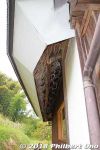
Uner the corrugated tin, you can see the thatched roof edge.
|
|
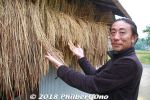
The 42-year-old owner, Kushida Kampei (櫛田寒平) moved to Ayabe from Tokyo seven years ago. He has his own rice paddies and other plots to grow his own rice and vegetables.
|
|
|
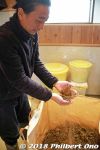
He also grows sesame seeds.
|
|
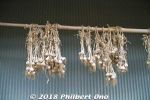
Garlic.
|
|
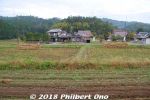
His rice paddies.
|
|
|
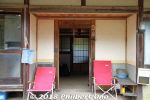
Entrance to the main lodge.
|
|
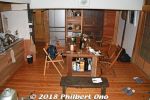
Kitchen and dining room. Totally renovated and modern on the inside, with a modern kitchen, toilet, and bath.
|
|

Guest room with twin beds.
|
|
|
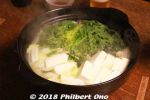
Our dinner included the rice and vegetables that he grew. (This was just the first serving.) It cost only ¥7,000 per night including dinner and breakfast.
|
|
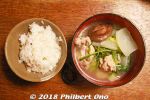
This was just the first serving.
|
|
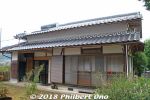
The other building was the guest house which was originally for the farmer's kids or relatives to stay when they returned to their hometown.
|
|
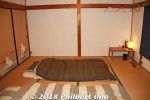
The guest room in the guest house was Japanese-style with twin futon.
|
|
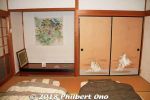
Very nice guest room.
|
|
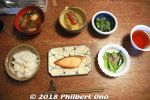
Breakfast.
|
|
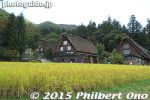
When you want to stay overnight in Shirakawa-go, it's hard to decide which minshuku (farmhouse lodge) to stay in. There's a good number of minshuku in Shirakawa-go.
|
|
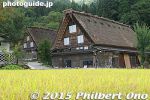
Most people go through an agent to book a room instead contacting individual minshuku to see if they have a room.These are two minshuku, Hisamatsu on the left and Furusato on the right. They are within walking distance from the bus stop.
|
|
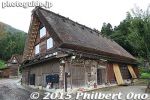
This is a minshuku in Shirakawa-go named Furusato where I stayed overnight. Looks very traditional on the outside and there are strict regulations on keeping it that way. ふるさと
|
|

Greetings in English by Furusato. ¥9,000 per night including a sumptuous breakfast and dinner.
|
|

I was surprised to see these pictures displayed inside Furusato. They showed Prince Hiro (currently the Crown Prince) who stayed at this minshuku while a college student.His brother Prince Aya/Akishino also stayed at this same minshuku when he was in college.
I was very surprised to hear from the proprietress that the Imperial Household Agency had designated the Furusato minshuku as *the* place to stay for Imperial family members visiting Shirakawa-go. She doesn't know exactly why. She says that although it was an honor to host the Princes, they can't really advertise it (the Imperial family can never be used for commercial purposes). She also lost money because they (her mother) had to buy new, fluffy futons, etc., just for the prince.
|
|
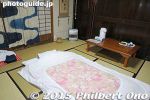
My room in Furusato. It was not the same room where the crown prince stayed.
|
|

My room
|
|
|

My room in Furusato.
|
|
|

Sink
|
|
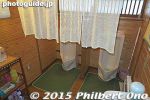
The restrooms are modern. I'm told this part of the house was for horses.
|
|
|
|
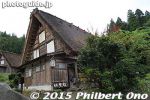
Next to Furusato is another minshuku named Hisamatsu in Shirakawa-go. Looks almost the same on the outside.
|
|
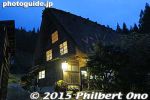
Hisamatsu at night.
|
|

Dinner at Hisamatsu near the irori hearth while the friendly proprietress chatted with us. I asked her about the difficulty of having a successor to take over the minshuku.She said it was a common problem among the minshuku operators there and hoped that one of her daughters would take over. She explained the Three Golden Rules that they follow: Do not sell, do not rent, and do not destroy the farmhouse. They are trying to change the rule about "do not rent." Perhaps if they rent it, the owner family can have another family operate their lodge.
|
|
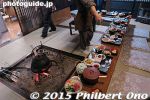
It costs 10 million yen to rethatch the roof. They do it once every 30 years. The thatch is Japanese pampas grass (susuki) from the base of Mt. Fuji.The rethatch cost is subsidized by the national government and municipality. So the family only pays one-third the cost of 10 million yen. In the old days, they had family and friends gather the thatch and the roof was rethatched by the villagers as a community project. Not anymore. They have to hire professionals to do it which cost a lot of money.
|
|

Irori hearth in Hisamatsu minshuku
|
|
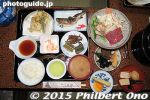
Dinner at Hisamatsu, Shirakawa-go. Includes Hida beef.
|
|

Breakfast at Hisamatsu, Shirakawa-go
|
|

Isaburo minshuku 民宿 伊三郎
|
|

Entrance to Isaburo
|
|
|

River next to the inn, mainly to carry away snow.
|
|

Dinner at Isaburo: River fish and mountain vegetables. After dinner, the proprietress and her husband and daughter sang and danced for us. They demonstrated different traditional musical instruments and had us try playing them. It was great. However, I was told that they don't do that anymore.
|
|

Mountain vegetables 山菜
|
|
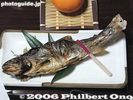
Grilled Iwana river fish
|
|

Fried Iwana, eat the head and all.
|
|
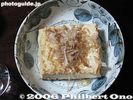
Tofu
|
|
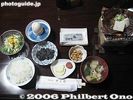
Breakfast at Isaburo minshuku
|
|

Otaya minshuku 民宿 太田屋
|
|

Due to a lack of thatch, only half of one side of Otaya's roof is newly thatched.
|
|

Inside Otaya
|
|
|
|
|
|
|









